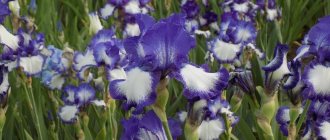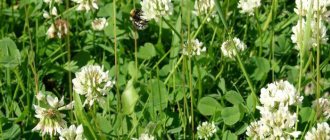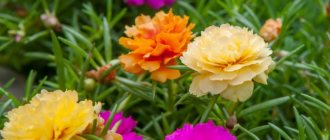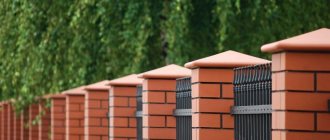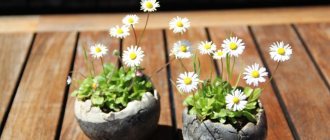This herbaceous plant of the cereal family has long settled in many summer cottages as part of decorative plantings. It is loved by both landscape designers and ordinary gardeners for its versatility, absolute unpretentiousness and abundance of colorful forms.
Fescue can become both a tapeworm on the site and can be perfectly combined with other plants - other cereals, flowering perennials, even trees like spruce, birch and juniper. Traditionally, this plant is used in landscape design as a ground cover. Fescue is ideal for rocky compositions, mixborders and creating soft accents in plantings.
Description of the plant
There are several types of fescue, which differ primarily in the color and length of the leaves. The leaves or spikelets are collected in dense bunches ranging from 40 to 120 cm in length and can have a color ranging from purple, like red fescue, to regular green. The roots of all types of fescue are fibrous and usually have a depth of 20-30 cm.
Meadow fescue usually has green leaves and spikelets. The spikelets themselves are not very developed, which reduces the decorative qualities of the plant. The height of the plant is from 60 to 120 cm. But since this type of fescue is used mainly for decorating lawns and open areas, the plant is usually cut. Because of this, its leaves can be up to 20-60 cm high. Meadow fescue is distinguished by soft blades of grass that are pleasant to the feet.
The same simple plant is sheep fescue, which is characterized by shorter grass. This type is also often used to decorate lawns and open areas. Sheep fescue survives drought well, so it can often be found on dry lands or hills.
Gray fescue is the most beautiful species - its leaves have a light bluish color. This plant is most often used for various landscape design figures.
Silver caps of fescue look extraordinary anywhere:
- In the form of borders
- In mixborders
- In vertical clubs
- In the center of horizontal flower beds
For a brighter design, red fescue is used, which has green-pink leaves and red spikelets. The height of this plant is usually 30-40 cm. Photos of fescue perfectly demonstrate how it can create the necessary accents in a flowerbed or mixborder. However, due to its bright color, fescue is used in flower beds and compositions as a single plant.
Varietal types of fescue, such as gray and red, can be found mainly in private areas, parks or other places where the plant is cultivated.
Important! Since fescue is able to inhibit the growth of weeds, it is good to decorate flower bed borders, lawn borders or other places where you need to protect the soil and neighboring plants from green pests.
Interesting varieties
There are many varieties of the Festuca cinerea species, most of them are distinguished by their delicate coloring. Recommended varieties of gray fescue:
- "Elijah Blue" Elijah Blue - a variety ideal for rockeries, flower beds, and growing in pots on the balcony. Planted at a distance of 40-50 cm. Looks beautiful against the background of dark green coniferous shrubs, next to heather plants, flowering perennials. This is a variety with gray-green leaves that retain color exceptionally well throughout the year.
- "Sibersea" Sibersee - with white-silver leaves, blooms gently, does not require pruning.
- "Intense Blue" Intense Blue - has a beautiful shape and rich color. A variety with beautiful blue leaves and flowers 40-50 cm high.
- "Silberreiher" Silberreiher - has delicate inflorescences.
- “Azurit” Azurit is a variety with low leaves 15 centimeters high.
- “Blauspatz” Blauspatz – suitable for lovers of steel shades.
- "Meerblau" Meerblau is a sea-colored grass.
- “Blauglut” Blauglut is a low variety, the dark blue leaves of the variety grow up to 15 cm.
- "Golden Toupee" Golden Toupee is a variety with unusually colored leaves, which are lemony in early spring and later turn green. Grows up to 15-20 cm in height, forming very small yellow-green tufts. Leaves are needle-shaped, hard, pointed. Blooms from late May to June or July, forming paniculate inflorescences of cream color. Frost-resistant variety. Number of plants per 1 m²: 12- 16.
Photo. Variety Golden Toupee
- "Blue select" Blue select - flowering shoots reach 25-35 cm. The leaves are purple and blue. There are spurs at the base of the leaf blade.
- “Compacta blue” Compacta blue is a compact variety, completely frost-resistant, grows up to 25-35 cm.
Soil and fertilizing
Although fescue is unpretentious, it does not like acidic soils. In general, the plant gets along well in loose, turfy soils. If the soil is chernozem, rich in humus, then the plant will be fluffy and bright, which is important mainly for species such as red and gray fescue. On dry, poor soils, sheep, meadow or grassy fescue takes root better.
The root system of the plant strengthens, heals the soil and destroys weeds. This is why planting fescue is good for the soil. This plant is an excellent green manure.
The plant is also used to strengthen slopes and prevent landslides. The following fertilizers are used to feed the plants:
- Ashes all season long
- Compost is getting closer to winter
- Mineral fertilizers throughout the season
- Nitrogen fertilizers at the beginning of the season
Characteristics
The cereal has good drought resistance and does not like moisture . Due to the fact that the crop does not require frequent watering, it is readily grown by gardeners who prefer to spend a minimum amount of time on care and at the same time have stylish, attractive flower beds and lawns.
Gauthier fescue has the following characteristics:
- Frost resistance - the variety is characterized by high winter hardiness, but in severe frosts partial death of evergreen foliage is possible. However, with the onset of warmth, the plant restores its color and bush shape.
- Optimal temperature for growth - Kostritsa is a cold-growing plant, and feels best in the temperature range from +15 to +24 ˚С. When the thermometer scale rises above 25 ˚С, growth stops until autumn, when the temperature drops again to the optimal values for the growth of this crop.
- Preferred soil types are loose, moderately dry or dry, poor in nutrients. Gautera loves slightly acidic and slightly alkaline light, sandy soils. It also grows well in loam. Optimal soil acidity is 6-8.
- Relation to light - light-loving, but can grow in slightly shaded places. However, lack of light causes a decrease in the intensity of leaf color.
- Disease resistance is high provided it grows in dry places. In too humid an environment, the plant becomes susceptible to powdery mildew and spotting.
- Resistance to pests is high, but under unfavorable conditions and decreased immunity it can be affected by spider mites, cutworms, and bark beetles.
Watering and temperature
The plant prefers moist soils that are regularly and well irrigated. Therefore, questions about how to water fescue usually do not arise. Thanks to its powerful, fibrous roots, the plant easily survives drought. However, the plant does not like areas with very high humidity.
Moreover, due to its low watering requirements, this plant gets along well with other herbs and flowers, which is important for any flower garden and landscape design compositions.
Advice. Despite the small leaves, the plant really does not like watering in the bright sun at its zenith. Despite the fact that the leaves of the plant are quite thin, they can easily get burned by droplets of water in strong sun.
Ornamental plant species and varieties feel best in the middle zone. But they can also be grown in northern or southern regions. Any type of fescue is frost-resistant, so sudden cold weather will not destroy them. Warmer areas are loved by sheep fescue, which grows wild in both forests and hot steppes.
For what purposes can it be grown?
With the help of Gauthier fescue, you can create various landscape compositions and use it for group or individual plantings.
Lawns
Since Goutera is characterized by short stature and slow growth, it is advisable to use it for planting on lawns .
In this case, they will not need to be mowed as often as other varieties. In addition, in the summer, when the air temperature rises above 26 degrees, the grass stops growing and resumes growth only in the fall, when cool days set in.
The variety can be used for arranging parterre, meadow, Moorish, and sports lawns.
Other options for landscape design
The culture is suitable for decorating rocky hills, rock gardens, rock gardens, strengthening slopes and slopes. Due to the high decorative properties of the tussocks and cushions of Goutera fescue, it is often used to create borders, decorate flower beds, artificial ponds, and micro-borders .
Planting and growing
Fescue is propagated in a variety of ways:
- Dividing the bush
- Seedlings
- Seeds
Fescue seeds germinate easily and quickly and immediately begin to actively grow. Shoots appear already 4-6 days after sowing. The sprouts rise and develop quite rapidly, within 1-2 weeks after emergence they turn into full-fledged seedlings, ready for open ground. Planting seedlings or adult bushes in the ground can be done from the beginning of April. It is better to cover young seedlings with some kind of material.
It is also possible to sow seeds directly into open ground. To prevent the shoots from dying, it is better to sow in late April - early May.
Important! Sowing seeds in open ground is usually used when decorating lawns, lawns and fields. Single seedlings are usually used for use in landscape design.
Advice. Since plant seedlings appear very quickly and their development is fleeting, growing this plant from seeds can be interesting for children. The child will be able to observe how a whole bush and a small seed develop. In this case, he will not have time to get tired of this plant.
Seasonal care rules
Every 2-3 years, Gauthier fescue must be rejuvenated by digging up a bush and dividing it into several parts. Neglect of such a procedure leads to the degeneration of culture. A sign of this is the formation of a bald spot in the central part of the hummock. Dividing bushes must be done in spring or autumn .
- Spring - cleaning of dry leaves and other debris is carried out. Then, if the lawn requires mowing, the grass is mowed to a height of 3-5 cm. Bushes older than 2-3 years of age must be carefully dug up and the side, green parts separated from them, discarding the dried central part. Separated rosettes fill all the bald spots on the lawn. Water the grass only if the soil is very dry.
- Summer - during the warm period of the year, care consists of cleaning the lawn from dry leaves, periodic watering and mowing.
- Autumn - if the lawn does not require mowing, then at the beginning of autumn, when the plants have finished blooming, the dried hairs are cut off. Water and remove leaves as needed.
- Winter - in regions with harsh winters, the grass can be covered with snow. No other care measures are required at this time of year.
Watering
Since Goutera fescue tolerates drought well and does not respond well to moisture, it is not watered often - once every 3 weeks. Watering should be moderate; a lawn with this type of grass should not be over-watered .
Fertilizer
Gauthier fescue grows well in poor soil, so there is no need to fertilize it. In cases where grass leaves begin to turn pale and lose color due to lack of nitrogen, the plants can be fed with saltpeter or mullein solution.
At elevated pH levels, the soil is deoxidized using ash, dolomite flour or lime.
A haircut
Bushes are pruned at the end of February or early spring , before the leaves begin to grow.
If the grass was planted on the lawn for mowing, then it must be mowed as the leaves grow.
The height of lawn grass should be 3-5 cm . It must be mowed when the leaves grow 1.5-2 cm from the set height.
Diseases and pests
The fescue plant is resistant to various diseases and pests. Ticks, aphids and other insects rarely pay attention to it. For this reason, fescue will be useful in compositions, as its presence will inhibit the migration of insects from plant to plant.
Among the diseases, fescue can be affected by fungus or mold if the plant lives in very moist, slightly swampy soil. To get rid of the disease, you just need to trim off the affected foliage.
Simple and unpretentious fescue lives 10-15 years. During this period, she will decorate the garden and also make the living of her plant neighbors more comfortable.
Green floss for decorative garden
Background plants are the main characters of the garden. In any case, for the garden to look like a single whole, they should make up the main share. After all, in order to achieve harmony between the individual parts of decorative compositions, they must be held together into a single plot. And for this, there should be no bare soil left in the garden - the gaps between the plants must be filled with something.
And the way human perception works is that the most neutral and, at the same time, most pleasing to the eye background is green. This is explained by the fact that green grass forms the usual undergrowth of almost all natural communities. We most often call grass grasses: bluegrass, bentgrass, fescue.
You already guessed that next we will talk about the lawn. It was not by chance that a lawn of evenly trimmed cereals originated in England. Moreover, the British did not invent it at all. It's all the sheep's fault. It was they who nibbled the grass so evenly that they turned pastures into real lawns. The invention of the lawn mower only improved the “quality of cutting” and expanded the scope of the lawn.
We no longer have a shortage of lawnmowers. But not everyone can afford to install a lawn, and there are more than enough worries with it. After all, it must not only be cut on time, but also watered and repaired. But the Gauthier fescue does not need to be cut. It doesn’t grow higher than 10 cm. An individual fescue plant “spreads” with age into a fairly dense cushion with a diameter of about 40 cm. But if they are planted often enough, they will merge into one emerald carpet.
Thanks to this quality, Gauthier fescue is very popular among gardeners in Europe. In any Dutch, German or Czech garden you will find at least one bush or cushion of it.
Fescue Gautier
Photo of fescue
Scope of application
Due to its attractive appearance and properties, tall fescue is actively used:
- for creating lawns in the landscape design of personal plots;
- to strengthen the slopes of transport highways;
- as a forage plant with a yield of 50 to 100 centners per hectare;
- as green manure (green manure);
- as a turf-forming plant in a turf-humus soil maintenance system.
In gardening a personal plot, tall fescue occupies one of the leading positions among cereal crops. The compactness, decorativeness, and unpretentiousness of the plant allows every gardener to find a place in the garden for this beautiful grass, which with its fascinating appearance will make the area original and stylish.
Possible problems
Growing crops does not cause difficulties even for novice gardeners. But if the growing conditions do not match, the plant develops poorly and loses its decorative properties.
Possible difficulties:
- Sharp wilting of the bushes , but at the same time they retain the bluish tint of the leaves. The problem arises against the background of prolonged stagnation of moisture in the soil, which leads to rotting of the root system. It will not be possible to save such a plant.
- Drying of the central part of the bushes . This occurs as the plants grow and is a disadvantage. Therefore, it must be periodically seated.
- Slow growth of clumps . The plant does not develop well with a lack of light, as well as in prolonged hot and humid weather.
Possible difficulties
When grown in one place, fescue dies off after a few years. Timely transplantation and division will help prevent the problem.
Fescue has enviable immunity and practically does not get sick if grown separately. However, when used in lawn mixtures or in combination with beautifully flowering plants, it often becomes infected from neighbors. Symptoms of the most common ailments, as well as treatment methods and the most effective drugs are presented on the website in the appropriate sections.
Moles and voles, building endless underground paths, damage the root system of fescue.
You can ward off rodents using modern ultrasonic repellers. Editorial team LePlants.ru
